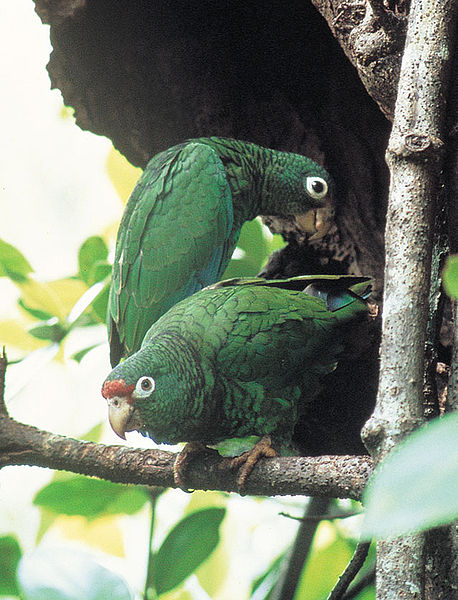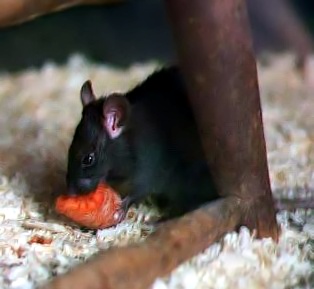With a total population numbering 295 birds, only 60 of which live in the wild, the Puerto Rican Amazon (Amazona vittata) holds the unenviable title of one of the world’s 10 most endangered birds. A subspecies, A. v. gracilipes, once found on neighboring Culebra, Mona and Vieques Islands, is now extinct.
US Native Parrots
 The Puerto Rican Amazon is the only parrot native to a US territory; it is also distinguished by quite possibly being the bird that helped lead Columbus to land on his first voyage (please see article below).
The Puerto Rican Amazon is the only parrot native to a US territory; it is also distinguished by quite possibly being the bird that helped lead Columbus to land on his first voyage (please see article below).
The sole Psittacine living on the US mainland is the endangered thick billed-parrot (Rhynchopsitta pachyrhyncha). Our only other native parrot, the Carolina parakeet, was hunted to extinction by the early 1900’s.
People unaware of this species plight are sometimes confused by all the concern…after all, parrots abound throughout Puerto Rico. However, these pet trade escapees are introduced species, which actually worsen the Puerto Rican Amazon’s plight by competing for food and nest sites, and, possibly, through hybridization.
Rats and other Threats
 The Puerto Rican Amazon’s decline is largely due to deforestation. It nests only in pre-existing holes in tall, mature trees. When these trees are cut, the parrots cannot nest, or they use sites that are vulnerable to predators, competitors and hurricanes.
The Puerto Rican Amazon’s decline is largely due to deforestation. It nests only in pre-existing holes in tall, mature trees. When these trees are cut, the parrots cannot nest, or they use sites that are vulnerable to predators, competitors and hurricanes.
The introduced black rat (Rattus rattus) has also contributed significantly to this parrot’s problems. Alternately called the roof rat, this highly arboreal rodent takes eggs and chicks from 4 of every 6 nests in some areas. The pearly-eyed thrasher (Magarops fuscata) a small bird not usually known as a “trouble-maker”, has exploded in numbers in recent times (possibly due to changes in land use). Oddly, it now preys upon parrot eggs, and competes for nest sites.
In addition to the introduced parrots mentioned earlier, the island’s 3 large hawks pose a threat to the already depleted Puerto Rican Amazon population. Added to this is the species’ need for an intact habitat that supports varied food sources…it has been documented as feeding upon over 50 types of plants.
Recovery Efforts
Recovery efforts were initiated in 1973, at which time a mere 13 birds remained in the wild. Today, the US Fish and Wildlife Service administers the Puerto Rican Parrot Recovery Program, which encompasses both wild and captive management techniques (double-clutching, nest rehabilitation, predator control, releases, education).
Two wild populations have been established. That at Rio Abajo is comprised entirely of captive-bred birds, while the Loquillo National Forest (El Yunque) in Eastern Puerto Rico is home to both wild and released individuals. Before releases were initiated, detailed studies of the Hispaniolan parrot (Amazona ventralis) were conducted in the Dominican Republic and used as a template for the Puerto Rican Amazon’s return to the wild.
So far, ornithologists are cautiously optimistic. Released birds have been observed to associate with wild parrots, and radio tracking studies indicate that 40-50% of the captive-bred individuals survive the critical first 6-9 months. However, a dearth of suitable habitat and predation remain serious concerns.
A Lesson
The fact that an intense, well-financed, 36 year-long recovery program has only bolstered this species’ numbers to 295 illustrates well the depth of commitment needed if endangered animals are to be spared extinction. Rarely if ever is the mere establishment of a protected area sufficient.
Further Reading
Please see my articles Did Parrots Help Columbus Find America? and The Thick Billed Parrot for further information on Puerto Rican Amazons and US native parrots.
Rattus rattus image referenced from Wikipedia and orignally posted by Liftarn
 That Bird Blog – Bird Care and History for Pet Birds
That Bird Blog – Bird Care and History for Pet Birds
